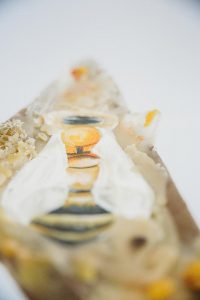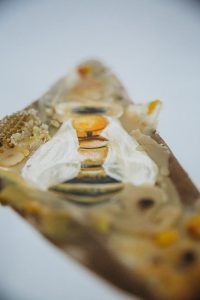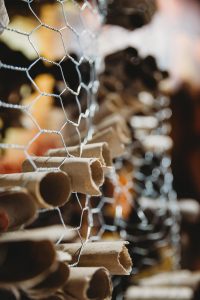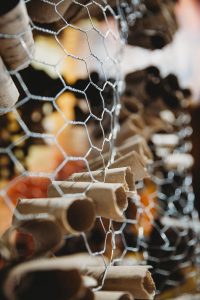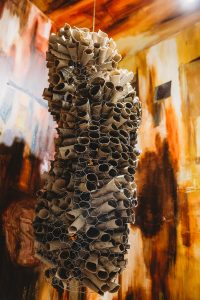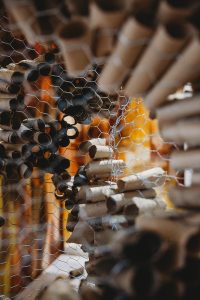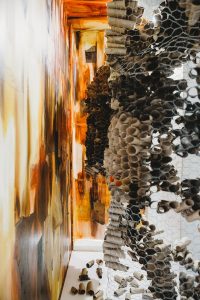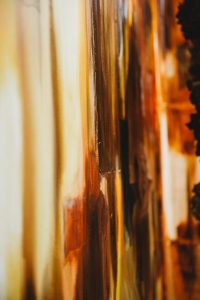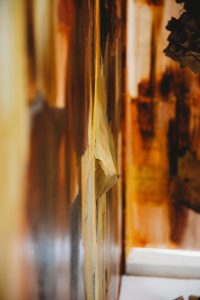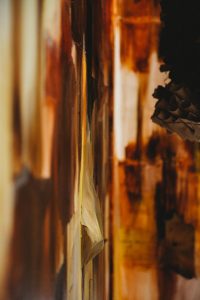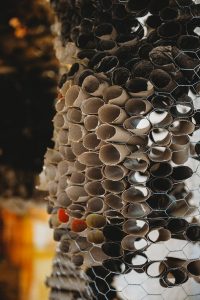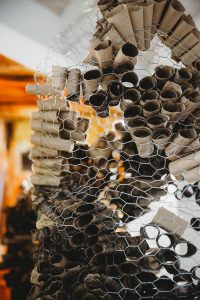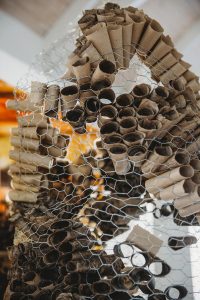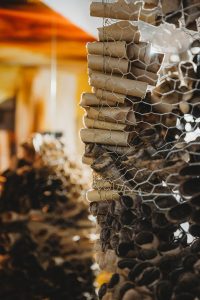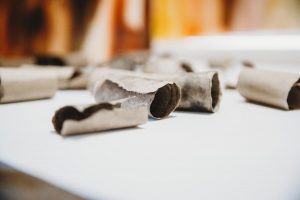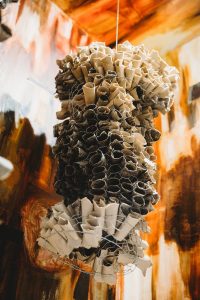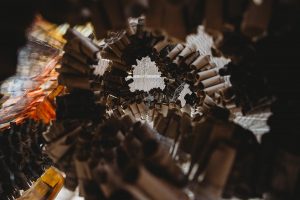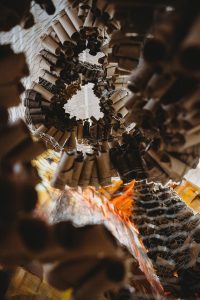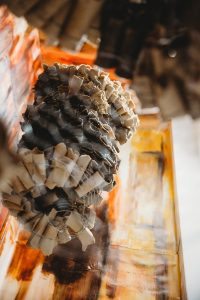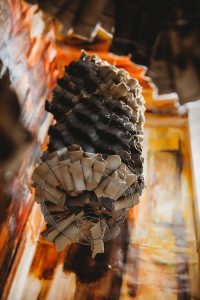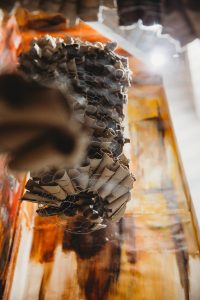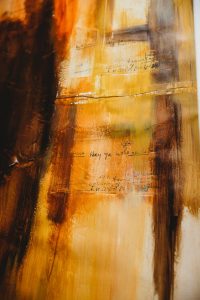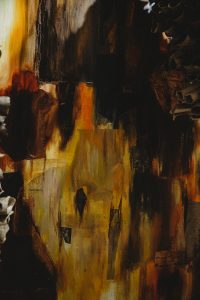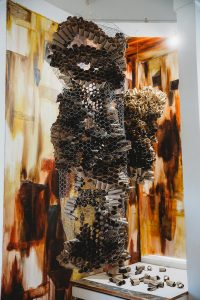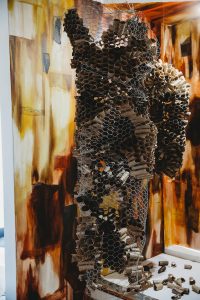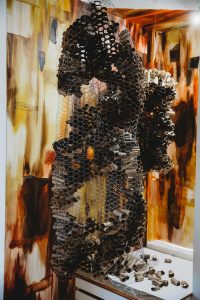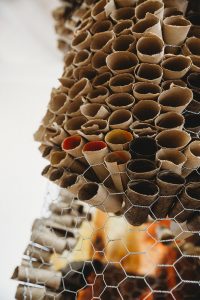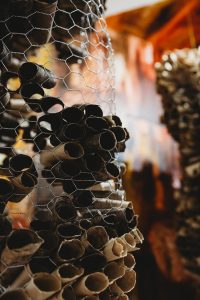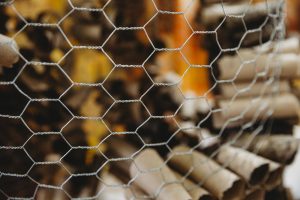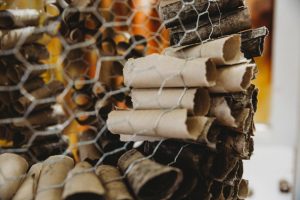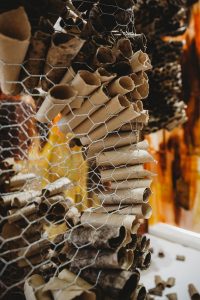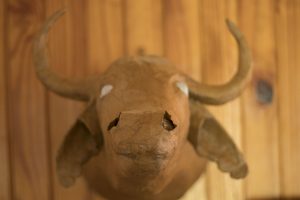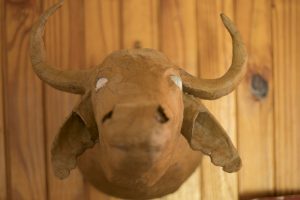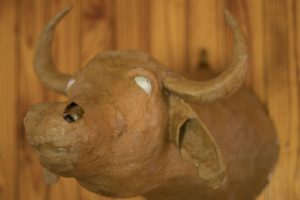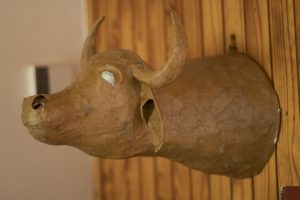Sculpture
Hive of Activity
The Hive of Activity was my final piece for my A Level Art portfolio. One of the themes of my final year’s work was the effect of magnifying tiny detail to demonstrate the patterns and designs of nature.
This installation was based on the structures of a bee hive in an abstract form. I hung the abstract beehive between 3 panels, and made it so big that it was almost a walk-in beehive. I wanted to magnify the importance of bees and their place in the world.
I used chicken mesh because of its hexagonal design and bent it into the shape that I wanted. I used brown card to represent the honey cells. In some areas I used charcoal on the card to give the cells darker tones to look more like real honey comb. I left some of the wire showing through to depict empty cells.
Before I created my abstract hive, I did a lot of research with actual bee hives. We have a bee box at home and a professional beekeeper helped me to remove the lid of the hive and to film the bees in close proximity. I visited the local Bee Lady, who is well known in Harare and provides most of the commercial honey to local supermarkets and grocery stores. She talked me through the complex and precise workings of a bee hive, and explained the different roles of different bees within the colony. I also read a book written by her husband, Mike Schmolke, entitled “Beekeeping in Zimbabwe” which gave me invaluable insights into the workings of an African beehive.
The title, a Hive of Activity, came from the many small details in the walls of the installation which were done in collage with strips of paper and writing and paint. Even inside the actual sculpture there were tiny bits of colour in the paper rolls, to give it more life. There was a lot of hidden detail which is not visible at first glance.

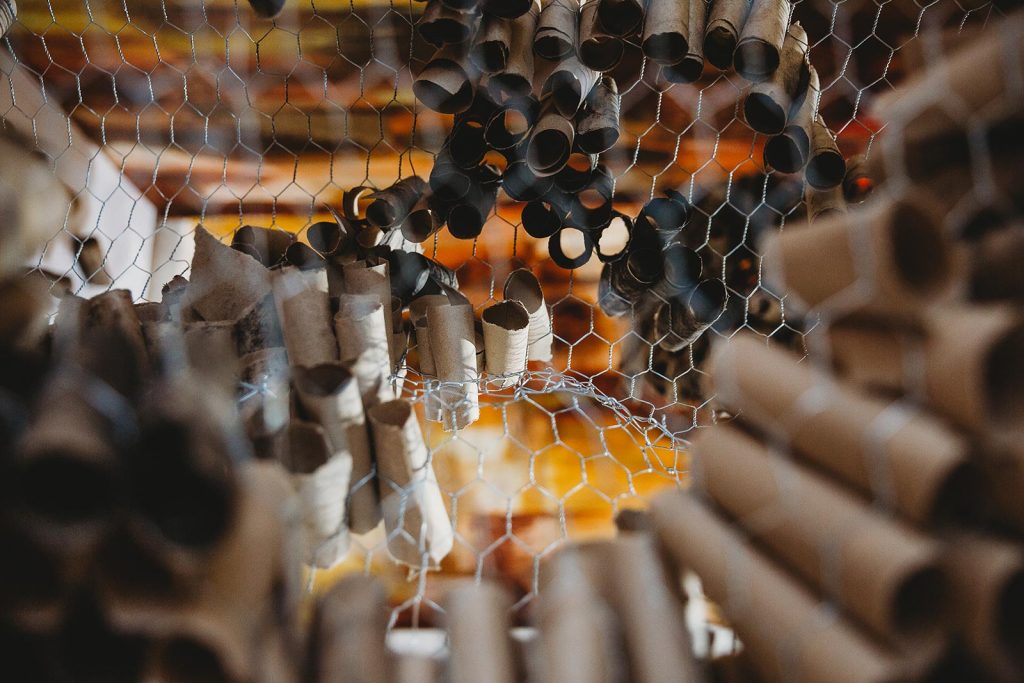
The Build Process
The Box
The Box was made from Tobacco Paper and Beeswax and I used it as a model for my end installation. I melted beeswax and incorporated oil pastels and oil paints to give it richer tones and colour variations. It was just a practice piece but it was pretty cool. I made a tiny little version of the honey comb structure and placed it inside the box to work out how I was going to do the final version.
The First Hive
This was one of the first attempts I made to try and make the chicken mesh look like honey comb. I used tissue from old dressmaking patterns and that was used to represent the wax in the comb and the capped cells that were filled with honey.
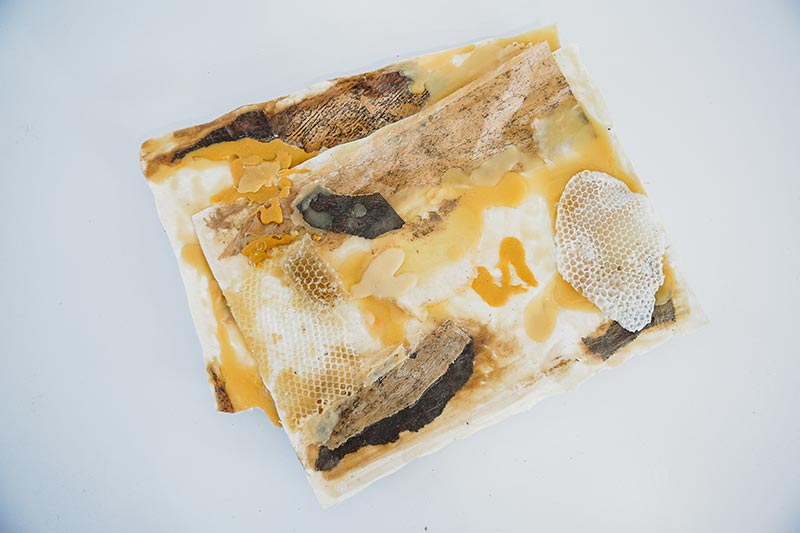
The Honey Comb Paper
This was a more detailed version than the box, looking more towards how I was going to do the walls of my final installation. I used several different media for this piece - tobacco paper, beeswax, fishnet and a real piece of honey comb. I was experimenting with texture and colour and even though it was just an initial sketch for the bigger piece, it ended up being a piece of art in its own right.
Bee Hive Palette
I used an old pallet frame with a wire mesh on the back which had come from an old gold-panning river bed. I liked it because of its geometrical design that alluded to honey comb. On the wooden sides I dripped paint and drew bees and bits of honey comb.
The Bee Hanger
I did this as an inspirational piece from another artist, Aganetha Dyck, who was making art for the same sort of reason that I was doing it. She was raising awareness for bees and she had made a piece of art using a wire hanger, honey comb, beeswax and drawing.
The Chair
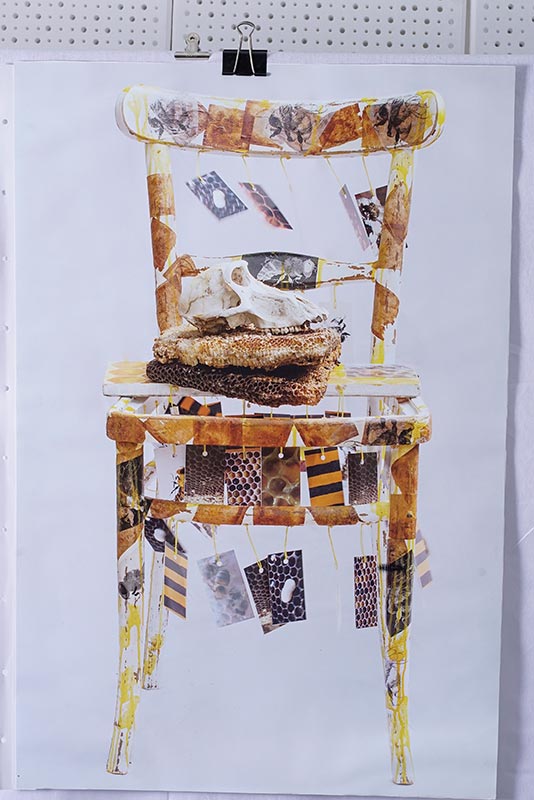
The Chair was a piece from my AS year and was a comment on the death of bees. It was a hive revolving around a skull showing the rapid decline of bees and the death of bees. The chair was an interesting structure that I used to hang small cards of honey comb and images of bees and when they were in the wind they moved and hit against each other and made a noise and represented the way bees move and the sound they make (the video is best viewed with the sound on). I also used 2 real pieces of honey comb on the seat of the chair and placed the skull on top of that. It was supposed to look like and behave like a beehive in the right conditions.
Opposites
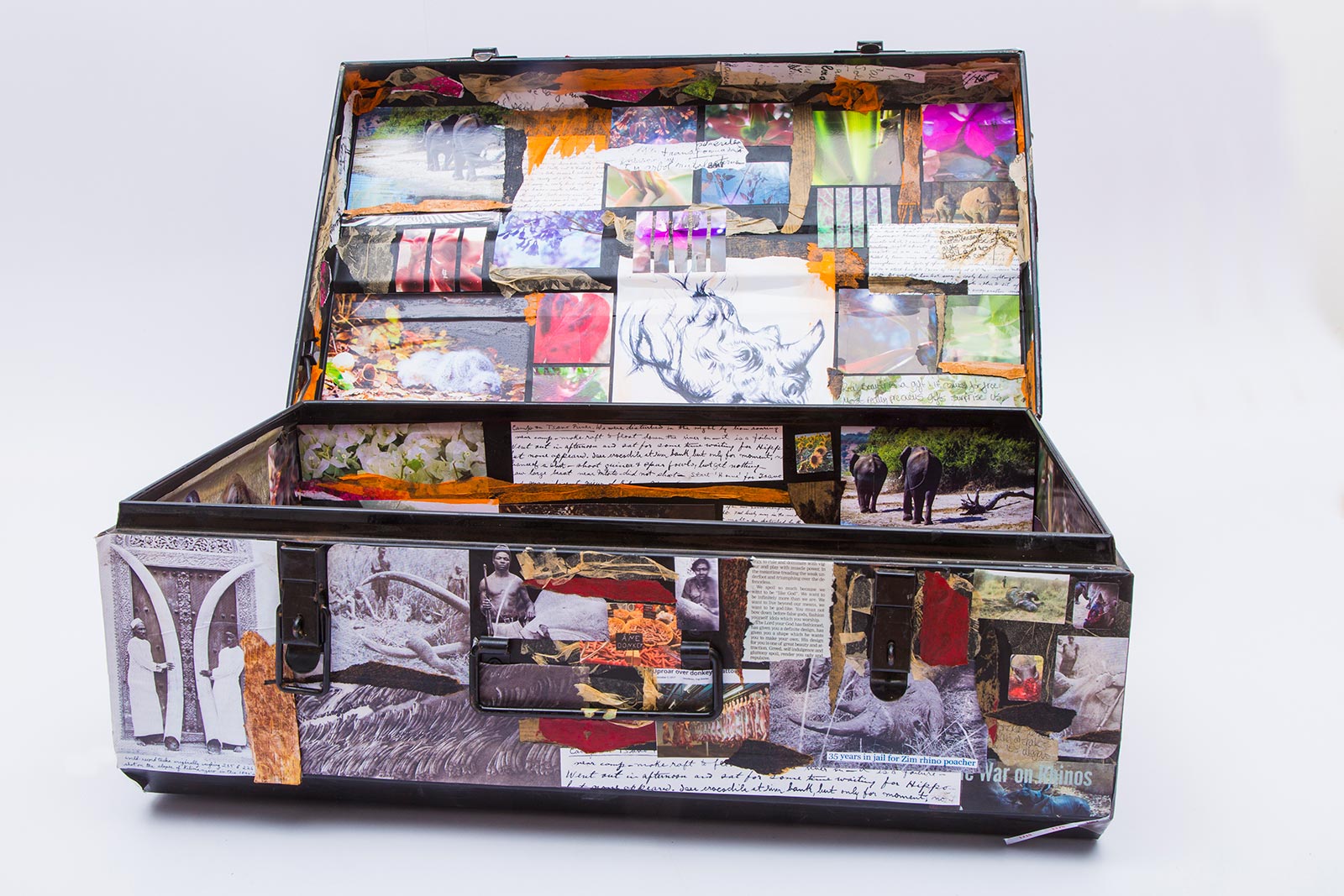
This was a study I did on life and death, focusing on nature and wildlife in Zimbabwe.
The outside of the box depicts death, from unnatural causes such as poaching, which is a big problem in Zimbabwe. It is mostly in black and white with flashes of red to depict danger and blood.
The inside of the box depicts the beauty of life, and the natural progression of death from natural causes. I attempted to show this through the use of real flowers, lots of colour, and vibrant use of texture. The lion skull inside the box depicts death in a natural way. The opposites were life and death, inside and outside.
The trunk that I used was in itself a comment on life and on the natural transformation that life brings. It was my uncle’s school trunk as a little boy in the 1980’s, then it was mine, then it was turned into a sculpture. This piece won an award at the Zimbabwe National Allied Arts Festival.
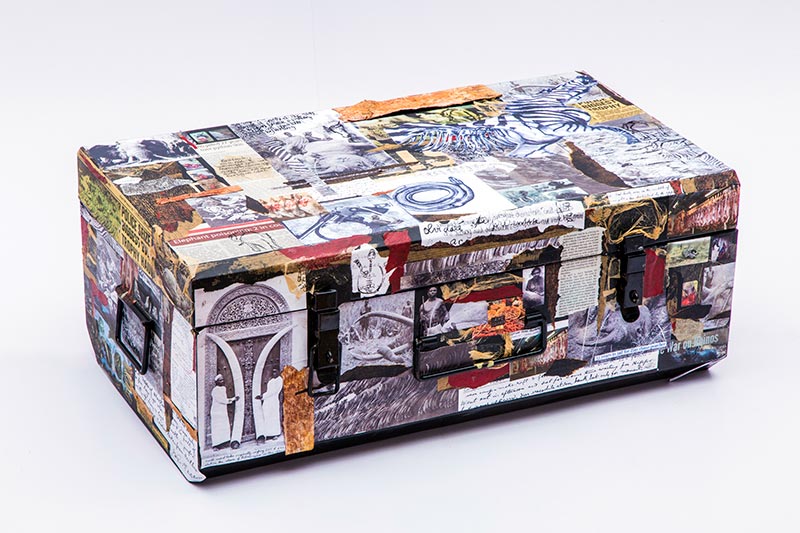
Death
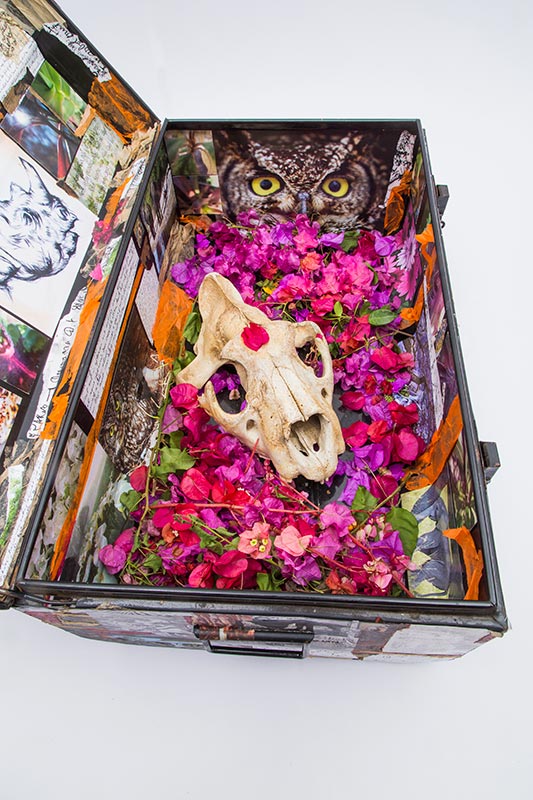
Life
Buffalo
This is a sculpture in papier mache (using reclaimed waste paper and wire) that I worked on with James Rego, the recycling sculptor. Papier mache is a completely new medium for me, and I have learned a lot in the process of making this piece. More than anything, it has given me the opportunity to get to know James. He is an inspiration – the embodiment of what it means to be Zimbabwean, with his talent, tenacity and generosity. He has shared his time and his art, and this Buffalo Head is far more than a sculpture in papier mache.
